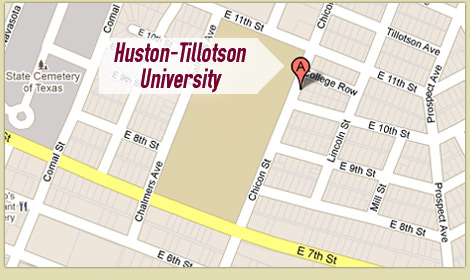
Assessment Resources
NEW RESOURCES!
1. HT Program-level Student Learning Outcomes Toolkit
Suskie, L. Blog posts categorized ‘Learning Goals’, A Common Sense Approach to Assessment in Higher Education Blog. Available at: https://www.lindasuskie.com/apps/blog
________________________________________________
2. Additional Resources and Scholarship
- Articles
- Cook, L. & Fusch, D. (2016). One Easy Way Faculty Can Improve Student Success. Academic Impressions.
- Hutchings, P. (2016). Aligning Educational Outcomes and Practices (Occasional Paper #26). Urbana, IL: University of Illinois and Indiana University, National Institute for Learning Outcomes Assessment (NILOA).
- Hutchings, P., et al. (2014). Catalyzing Assignment Design Activity on Your Campus: Lessons from NILOA’s Assignment Library Initiative. Urbana, IL: University of Illinois and Indiana University, National Institute for Learning Outcomes Assessment (NILOA).
- Hutchings, P. (2010). Opening Doors to Faculty Involvement in Assessment (Occasional Paper #4). Urbana, IL: University of Illinois and Indiana University, National Institute for Learning Outcomes Assessment (NILOA).
- Books
- Barkley, E. & Major, C. (2016). Learning Assessment Techniques: A Handbook for College Faculty. San Francisco, CA: Jossey-Bass.
- Fink, L. (2013). Creating Significant Learning Experiences: An Integrated Approach to Designing College Courses. San Francisco, CA: Jossey-Bass.
- McKeachie, W. & Svinicki, M. (2013). McKeachie’s Teaching Tips. Belmont, CA: Wadsworth.
____________________________________________________________
3. Curriculum Mapping Toolkit
The resources below are intended to help programs and faculty as they develop or update their curriculum maps. OIPRA is available to collaborate with instructional programs to develop or update curriculum maps; contact us for additional information.
- Quick Guide to Curriculum Maps – PDF resource intended to help WSU programs and faculty consider good practices for developing and updating curriculum maps
What is a Curriculum Map?
A curriculum map is a matrix aligning program-level student learning outcomes (SLOs) with the courses for a degree program or major. Program curriculum maps may vary in complexity and structure, to best meet the needs of the program.
Value of Curriculum Maps
Curriculum maps make visible the relationship between courses and program-level SLOs, enabling faculty to design and implement intentional curricula which systematically develop and deepen students’ key skills and knowledge. In this context, curriculum maps can:
- Help each faculty member understand how their course is situated in the curriculum, and the essential contributions their course makes toward advancing program-level SLOs
- Reveal where the curriculum is stronger or weaker in terms of advancing program-level SLOs
- Provide a catalyst for faculty discussions about aligning and scaffolding courses, teaching, and assignments to effectively support student learning
- Help programs plan assessment of program-level SLOs
- Provide a framework for exploring the alignment between the intended, taught, and assessed curriculum
Curriculum Maps at HT
HT instructional programs are responsible for developing and regularly updating curriculum maps for their degree program or majors. Curriculum maps vary in approach and complexity. While a basic curriculum map simply shows which core courses support which program-level SLOs, most curriculum maps indicate an approximate level which a given course targets for a given program-level SLO (e.g., beginning, developing, mastering). Depending on context, some maps may include program electives and/or indicate which courses are available on a given campus.
OIPRA Services for Curriculum Maps
We’re here to help — contact us for more information or to request our services
- One-on-one or group consultations
- Interactive workshops
Additional Resources and Scholarship
Articles
Hutchings, P. (2016). Aligning Educational Outcomes and Practices (Occasional Paper #26). Urbana, IL: University of Illinois and Indiana University, National Institute for Learning Outcomes Assessment (NILOA).
Matveev, A., et al. (2010). Curriculum Mapping: A Conceptual Framework and Practical Illustration. AMCIS 2010 Proceedings.
National Institute for Learning Outcomes Assessment. (2018). Mapping Learning: A Toolkit of Resources. Urbana, IL: University of Illinois at Urbana-Champaign, National Institute for Learning Outcomes Assessment (NILOA).
Rawle, F., et al. (2017). Curriculum Mapping Across the Disciplines: Differences, Approaches, and Strategies. Collected Essays on Learning and Teaching. 10.
Books
Diamond, R. (2008). Designing and Assessing Courses and Currricula: A Practical Guide. San Francisco, CA: Jossey-Bass.
Suskie, L. (2018). Chapter 5: Designing curricula to help students learn what’s important. In Assessing Student Learning: A Common Sense Guide. San Francisco, CA: Jossey-Bass.
Other
Suskie, L. Blog posts queried for ‘Curriculum Maps’, A Common Sense Approach to Assessment in Higher Education Blog. Available at: https://www.lindasuskie.com/apps/blog
________________________________________________________




